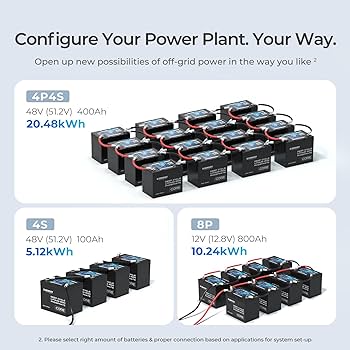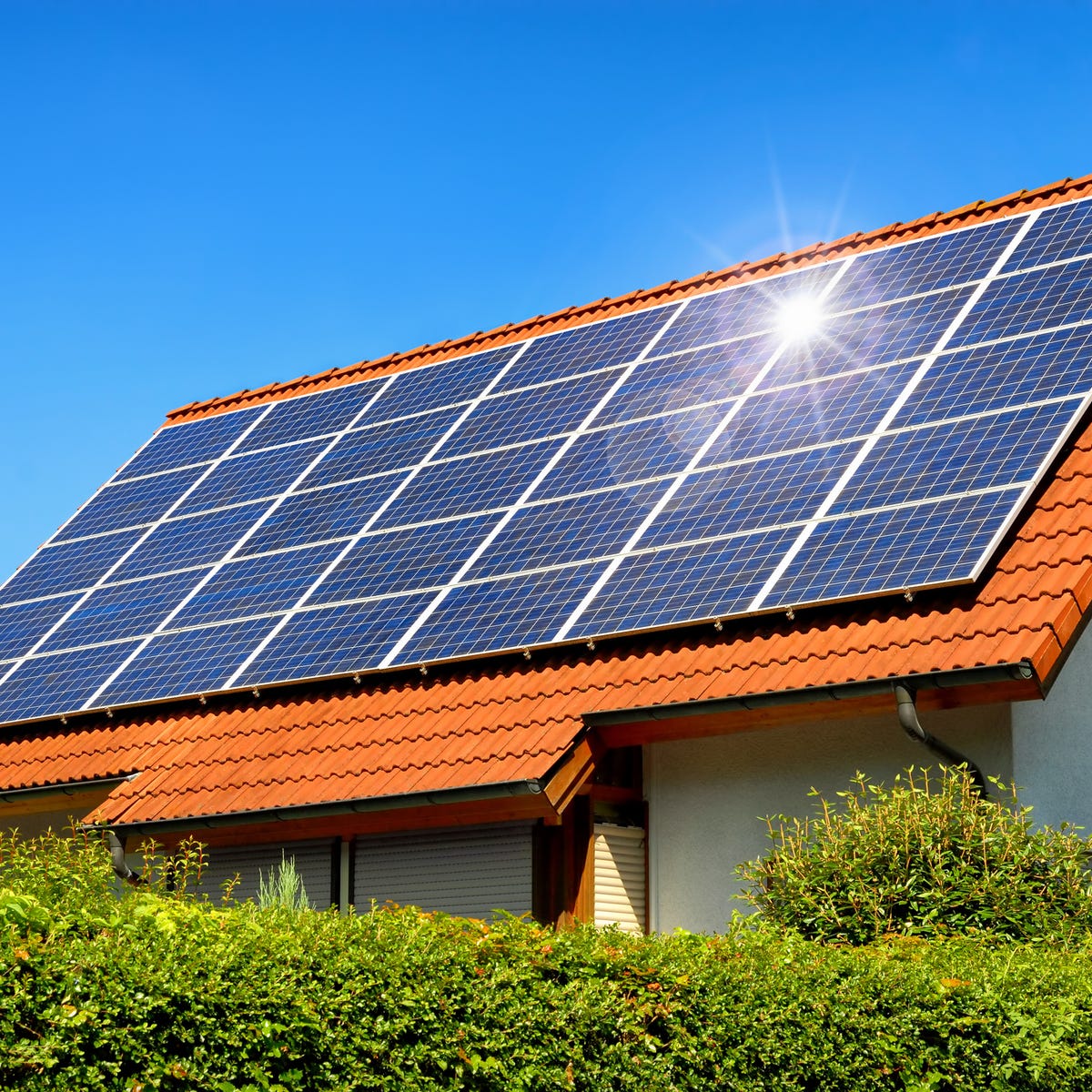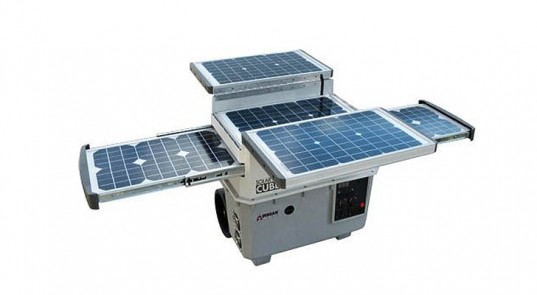Install a backup power supply in your off-grid setting requires careful planning and professional installation. It can provide reliable and continuous power for critical appliances and systems when your primary power source is down.
A backup power supply system typically consists of solar panels, batteries, and inverter/charger. Solar panels charge the batteries during the day, and the inverter converts the power to usable AC power for your home. When power is lost, the inverter/charger draws power from the batteries to keep your home running.
A professional installer can help you design a backup power system that meets your specific energy needs and budget. Investing in backup power is essential for those seeking independence from grid power and may save money over time.
Table of Contents
Why Install A Backup Power Supply
Having a backup power supply in your offgrid setting is essential for ensuring uninterrupted electricity supply. It helps you avoid the inconvenience of sudden power outages, especially during harsh weather conditions. With a backup power supply, you can keep your appliances running and continue your daily routine with ease.
Power Outages In Offgrid Settings
Living off the grid has its perks. You get to enjoy fresh air, stunning scenery, and you are one with nature. However, it also means that you have to be self-sufficient in every way possible. This includes generating your own power supply since you’re miles away from any utility grid. Power outages in an off-grid setting can disrupt your life, ruining the food in your fridge, leaving you in the dark, and cutting off your communication with the outside world. This is where a backup power supply comes in handy.
Importance Of Reliable Energy Source
Having a reliable source of energy is paramount in an off-grid setting. It provides a sense of security, knowing that your basic needs are met. A backup power supply can prevent unpleasant surprises when your primary source of energy fails. It not only ensures that your appliances and gadgets stay on, but it also protects your solar panels or wind turbines against power surges that can damage them, causing permanent failure.
Investing in a backup power supply can save you a lot of trouble, ensuring that your critical systems, such as medical equipment, flow uninterrupted. It also enhances your off-grid living experience, enabling you to enjoy modern amenities in your cabin or homestead.
In conclusion, power outages in off-grid settings are inevitable, and having a backup power supply is not only essential, but it’s also a lifesaver. It ensures that your appliances stay on, protects your primary source of energy against damage, and enhances your off-grid living experience. It’s an investment that’s worth the money, providing you with peace of mind, ultimately allowing you to experience a stress-free life in nature.
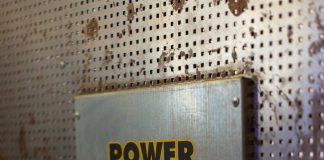
Credit: offgridliving.net
Types Of Backup Power Supplies
Backup power supplies are crucial for off-grid settings with unreliable electricity. There are various types of backup power supplies, including generators, solar-powered systems, and battery banks that can keep your power running in case of emergency. Ensure you choose the right system that suits your specific needs.
When living in an off-grid setting, having a backup power supply is crucial. There are different types of backup power supplies, and each one has its benefits and drawbacks. In this section, we will discuss four different types of backup power supplies: generators, solar batteries, fuel cells, and wind turbines.
Generators
Generators are perhaps the most well-known type of backup power supply. They are available in different types including diesel, gasoline, and propane. Generators can provide power for a long duration, depending on factors like their fuel storage capacity and fuel efficiency. They are especially useful for larger energy needs, such as powering appliances, tools, and even homes. However, excessive use of generators can be expensive in terms of fuel costs, and noisy when operating.
Solar Batteries
Solar batteries are a popular backup power supply option for those living in off-grid settings. They are quiet, require little maintenance, and don’t emit fumes or smoke. Additionally, once installed, solar batteries have minimal upkeep costs. Solar-powered backup batteries range in capacities and capabilities depending on power needs and budget. While this option is eco-friendly, it requires a considerable upfront cost to install solar panels and batteries.
Fuel Cells
Fuel cells are becoming increasingly popular in the backup power supply market, and they run on hydrogen fuel. They are quiet, produce no emissions other than water, and have a long lifespan. Fuel cells can provide power for an extended period of time. However, they require fuel storage or infrastructure to receive regular refueling. Fuel cells also need significant upfront investment in equipment and installation.
Wind Turbines
Wind turbines are an excellent backup power supply choice for those living in areas with high winds. Once set up, the energy is free and abundant. The turbines have minimal maintenance costs but can be noisy and require significant land area to be effective. They also need to be installed on elevated areas to maximize power production and obtain efficient results.
In conclusion, selecting the right backup power supply is vital when living off-grid. Understanding the benefits and drawbacks of each type of backup power supply helps in making informed decisions and choosing the one that suits your needs and budget.
Considerations Before Installing A Backup Power Supply
Installing a backup power supply in your offgrid setting is a great way to ensure uninterrupted power supply. However, there are some important considerations you should make before setting up the backup system. Determine the type of generator you need, wattage requirements, fuel source, installation procedures, and maintenance needs to keep it running efficiently.
When exploring off-grid living, having a backup power supply is essential for ensuring a continuous power supply. However, before installing a backup power supply, several considerations must be taken into account. These considerations include energy requirements, budget, maintenance, and permitting. In this article, we’ll explore each consideration and the factors involved in making an informed decision before installing a backup power supply.
Energy Requirements
Determining your energy requirements is crucial before installing a backup power supply. It’s imperative to evaluate your power needs accurately to avoid undersizing the system, resulting in lack of power during an outage and oversizing, which can result in higher installation and maintenance expenses. To determine your energy requirements, you need first to list all the appliances and devices that you intend to power using the backup power supply. Consider the wattage of each of these appliances and the duration you expect them to run during an outage. This information, combined with your electricity usage patterns and needs, can guide you in selecting the most appropriate backup power supply system.
Budget
Installation of a backup power supply is a significant investment and requires careful budget consideration. The budget for the backup power supply is largely determined by the system’s size and complexity, site-specific factors, and the type of backup power supply selected. The cost of a backup power supply can range from a few hundred dollars for a small generator to tens of thousands of dollars for a comprehensive solar system. It’s essential to have a clear budget allocation keeping all the factors in mind before selecting the system.
Maintenance
Proper maintenance of your backup power system is necessary for its optimal function and longevity. You should consider the ongoing maintenance requirements before installing a backup power supply. The maintenance requirements differ based on the type of backup power system installed. A generator typically requires regular fueling and oil changes, while a solar system needs minimal maintenance but may require occasional panel cleaning. You should factor in the maintenance requirements when budgeting for your backup power supply system to ensure that you are financially and logistically prepared to maintain the system.
Permitting
Before installing a backup power supply, it’s crucial to understand the permitting requirements in your location. There may be laws and regulations that govern the installation of backup power supply systems, such as noise ordinances or zoning laws. It’s essential to consult with local authorities to obtain the necessary permits before installing a backup power system. Failure to obtain the appropriate permits can result in penalties, fines, or even legal action.
In conclusion, before installing a backup power supply in your off-grid setting, it’s crucial to consider energy requirements, budget, maintenance, and permitting requirements. Ensuring that you have considered each factor will help you make an informed decision and install the most suitable system for your needs.
Installing A Backup Power Supply
Living in an off-grid setting has its benefits, but it can also come with challenges, especially when it comes to powering your home. To ensure that your home has a reliable power source even when the grid goes out, it is crucial to install a backup power supply. In this article, we will discuss the process of installing a backup power supply in your off-grid setting.
Selecting The Right Equipment
The first step in installing a backup power supply is selecting the equipment that best suits your needs. You will need to consider the type of backup power you want and the amount of power you require. There are different types of backup power sources available on the market, including solar-powered, wind-powered, and generator-powered systems. Each system has its advantages and disadvantages, so it is essential to weigh the pros and cons of each to determine the right fit for your home.
Sizing The System
Once you have selected the right backup power source, the next step is to size the system. Sizing your system involves determining the amount of power you require, depending on your power needs. You will need to consider the appliances and devices you will be powering during an outage and their power demands. By calculating your power needs, you can ensure that your backup power system is appropriately sized to meet your needs.
Wiring The System
When wiring your backup power system, it is essential to follow the manufacturer’s instructions to ensure that it is correctly done. You will need to connect the backup power source to your home’s electrical panel, which involves working with high-voltage components. As such, it is recommended that you hire a licensed and experienced electrician to wire the system for you.
Testing The System
After wiring the system, it is crucial to test it to ensure that it is working correctly. The testing process involves turning off grid power to simulate an outage and testing the system’s functionality. You will need to test the system’s performance and ensure that it can handle the power demands of your home during an outage. Regular testing of your backup power system is crucial to ensure that it is in good working condition in the event of an outage.
In summary, installing a backup power supply in your off-grid setting involves selecting the right equipment, sizing the system, wiring the system, and testing the system. By following these steps, you can ensure that your home has a reliable power source, even during power outages.
Maintenance And Troubleshooting
Installing a backup power supply in your off-grid setting is essential for uninterrupted power. However, regular maintenance and troubleshooting are required to ensure peak performance and avoid system failures. Proper upkeep can prolong the lifespan of your backup power supply and ensure that it is always ready when you need it.
Routine Maintenance
Regular upkeep of your backup power supply is critical to keep your off-grid system running smoothly. It is always a good practice to follow a maintenance schedule. A maintenance schedule should include checking and maintaining the batteries, fuel level, and oil level. Also, make sure to clean and test any electrical connections, change the air filter, and inspect cooling systems if you have an air-cooled generator.
Consider keeping a maintenance log, noting the date and services performed, and the next service date. Keeping a maintenance log will help keep track of maintenance history and provide valuable information when maintenance occurs.
Identifying Problems
If your backup power supply is not performing as expected, it is essential to identify the root cause of the problem. Common problems include starting failures, battery issues, generator overload, and fuel problems. Identifying the root cause of the problem will help determine the necessary steps required to solve the issue.
Troubleshooting Techniques
Troubleshooting your generator requires a step-by-step approach, starting with the most common problems and testing for solutions. Some common troubleshooting techniques include checking the fuel level, battery voltage, and load requirements. You may also need to check for potential wiring issues or short circuits.
If you are unsure about the diagnosis or troubleshooting steps required, it may be best to call a professional.
When To Call A Professional
Knowing when to call for professional assistance is critical. If you are experiencing any difficulties in assessing the situation or unsure of how to solve the problem, it is always best to seek help from an experienced backup power supply technician. Professional help ensures that the problem is solved correctly and safely.
By regularly maintaining your backup power supply and following troubleshooting techniques, you can extend your power backup’s lifespan and ensure that it is ready to go when you need it.
Benefits Of Backup Power Supply
Installing a backup power supply in your off-grid setting has immense benefits. Some of the significant advantages include:
Continued Power Supply During Emergencies
Power outages can occur anytime, especially during harsh weather conditions, such as storms, hurricanes, or extreme temperatures. With a backup power supply, you never have to experience a power outage during emergencies. This ensures you have constant access to power, keeping you and your loved ones safe and warm in such dire situations.
Reduced Dependence On Grid Power
With a backup power supply, you can reduce your dependence on grid power. This is especially important in off-grid settings, where grid power supply might not be available or might be unreliable. Having a backup power supply gives you more control over your power source and can help you save a lot of money in the long run.
Savings On Energy Bills
Investing in a backup power supply can lead to significant savings on your energy bills. This is because most backup power supplies, such as solar generators and wind turbines, harness renewable energy sources, which are free and abundant. This not only helps you save money but also reduces your carbon footprint, making it a win-win solution.
Increased Property Value
Lastly, installing a backup power supply can increase your property value significantly. This is because more and more people are becoming environmentally conscious and are willing to pay more for homes that have eco-friendly features. A backup power supply is an attractive feature that potential buyers will find appealing, thus increasing your property value.
Challenges Of Backup Power Supply
A backup power supply is crucial for off-grid settings, but it comes with its own set of challenges. It’s important to choose the right size and type of battery, ensure proper installation, and have a plan for maintenance and replacement.
When it comes to living off-grid, one of the biggest challenges is ensuring you have a reliable source of power. In an off-grid setting, there are not always traditional power sources available, making backup power essential. However, there are several challenges associated with backup power supply, including initial cost, maintenance and replacement costs, environmental impact, and noise and air pollution.
Initial Cost
The initial cost of installing a backup power supply system in an off-grid setting can be quite expensive. Depending on the type of system you choose and your energy needs, you could be looking at a significant investment. For example, a generator might cost anywhere from a few thousand dollars to tens of thousands of dollars, depending on the size and fuel type. It is essential to consider your budget and energy needs to decide the type of backup power supply system that is right for you.
Maintenance And Replacement Costs
Another challenge of backup power supply in off-grid settings is the ongoing maintenance and replacement costs. Regular maintenance is crucial to ensuring that your backup power system runs smoothly, and you will need to factor these costs into your budget. Additionally, backup power systems often need to be replaced every few years, adding to the overall cost of the system.
Environmental Impact
It is essential to consider the environmental impact of backup power supply systems in off-grid settings. While they provide essential power, backup generators and other systems can be significant sources of emissions and pollution. It is vital to choose a system that is environmentally friendly and has a lower impact on the environment.
Noise And Air Pollution
Noise and air pollution are two significant challenges associated with backup power supply systems in off-grid settings. Generators and other systems can be noisy and obtrusive, making it difficult to enjoy the peace and quiet of an off-grid lifestyle. Additionally, the emissions produced by these systems can have a significant impact on air quality, particularly in more remote areas. It is essential to choose a system that is both low noise and low emission to minimize these challenges.
In conclusion, backup power supply is a critical component of off-grid living, but it comes with its own set of challenges. When choosing a system, it is essential to consider factors such as initial cost, maintenance and replacement costs, environmental impact, and noise and air pollution to ensure that you are making an informed decision.
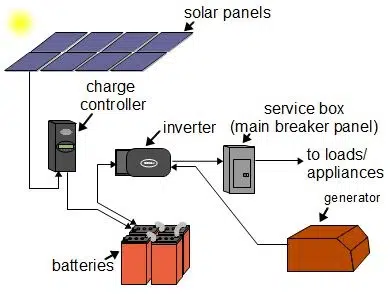
Credit: www.santansolar.com
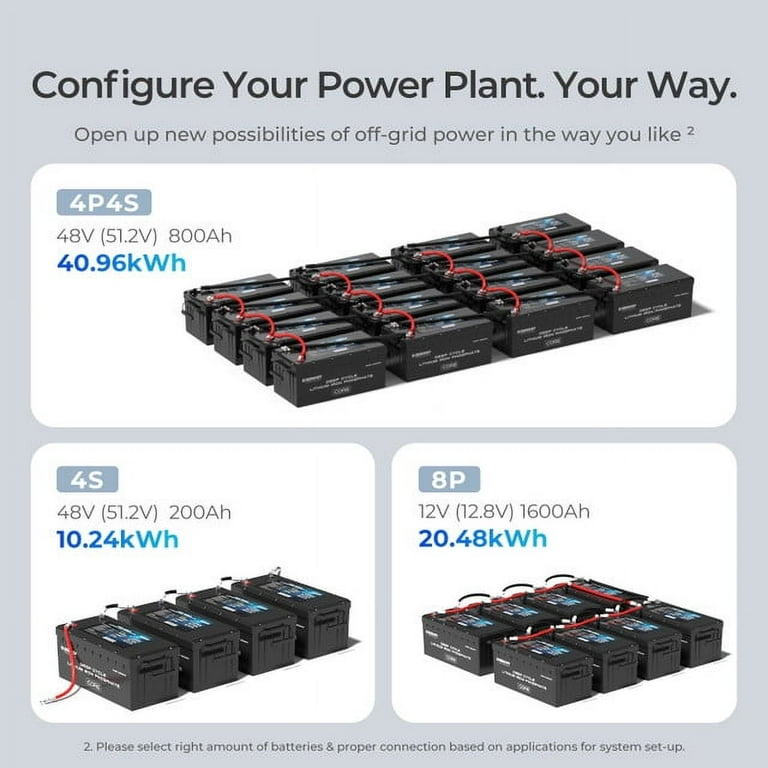
Credit: www.walmart.com
Conclusion
When living off the grid, having a reliable backup power supply is essential. Installing a backup power supply system ensures you are never left in the dark during power outages. Beyond emergency situations, it also provides the flexibility to power all your electrical appliances and charge your devices as your source of energy.
With numerous options available, you can easily find one that perfectly suits your off-grid lifestyle. Installing a backup power supply is an investment that will safeguard your comfort and convenience in the long run.





